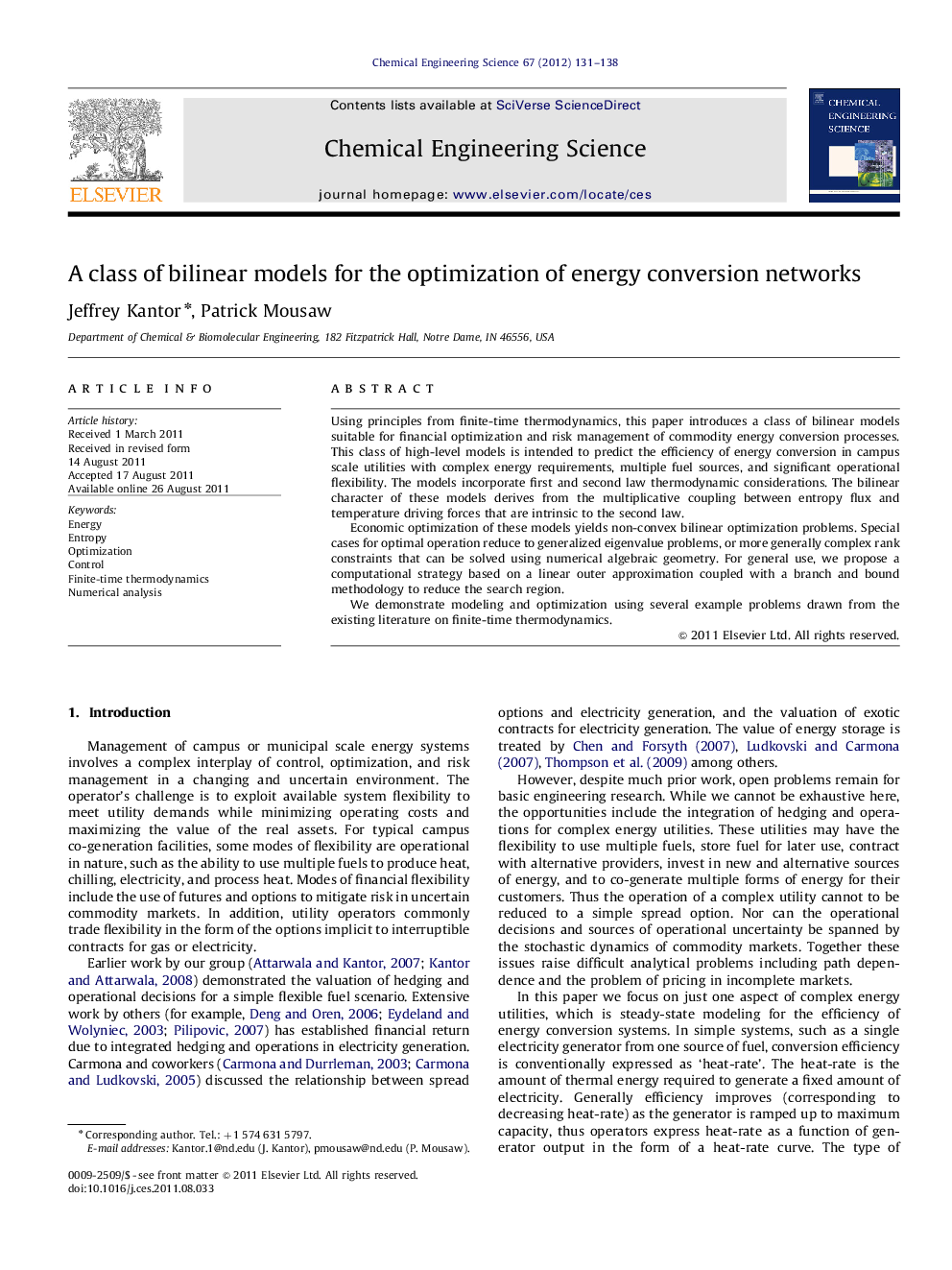| Article ID | Journal | Published Year | Pages | File Type |
|---|---|---|---|---|
| 156005 | Chemical Engineering Science | 2012 | 8 Pages |
Using principles from finite-time thermodynamics, this paper introduces a class of bilinear models suitable for financial optimization and risk management of commodity energy conversion processes. This class of high-level models is intended to predict the efficiency of energy conversion in campus scale utilities with complex energy requirements, multiple fuel sources, and significant operational flexibility. The models incorporate first and second law thermodynamic considerations. The bilinear character of these models derives from the multiplicative coupling between entropy flux and temperature driving forces that are intrinsic to the second law.Economic optimization of these models yields non-convex bilinear optimization problems. Special cases for optimal operation reduce to generalized eigenvalue problems, or more generally complex rank constraints that can be solved using numerical algebraic geometry. For general use, we propose a computational strategy based on a linear outer approximation coupled with a branch and bound methodology to reduce the search region.We demonstrate modeling and optimization using several example problems drawn from the existing literature on finite-time thermodynamics.
► The paper introduces a new class of mathematical models for complex energy systems. ► Finite-time thermodynamics predicts the efficiency of complex energy systems. ► The models are intended for the economic optimization of complex energy utilities. ► Proposes a new algorithm to solve the bilinear, nonconvex optimization models. ► A new class of mathematical models integrates alternative energy sources.
